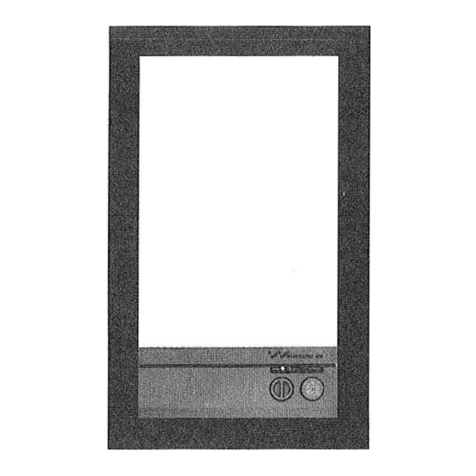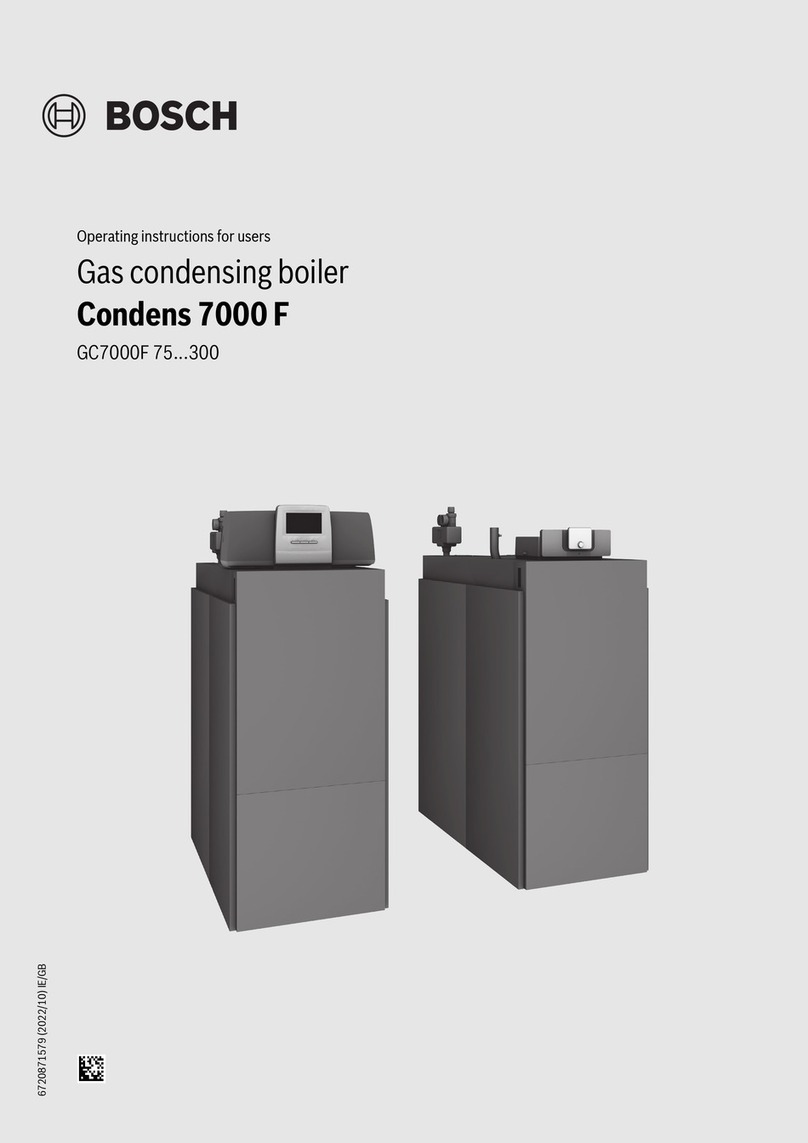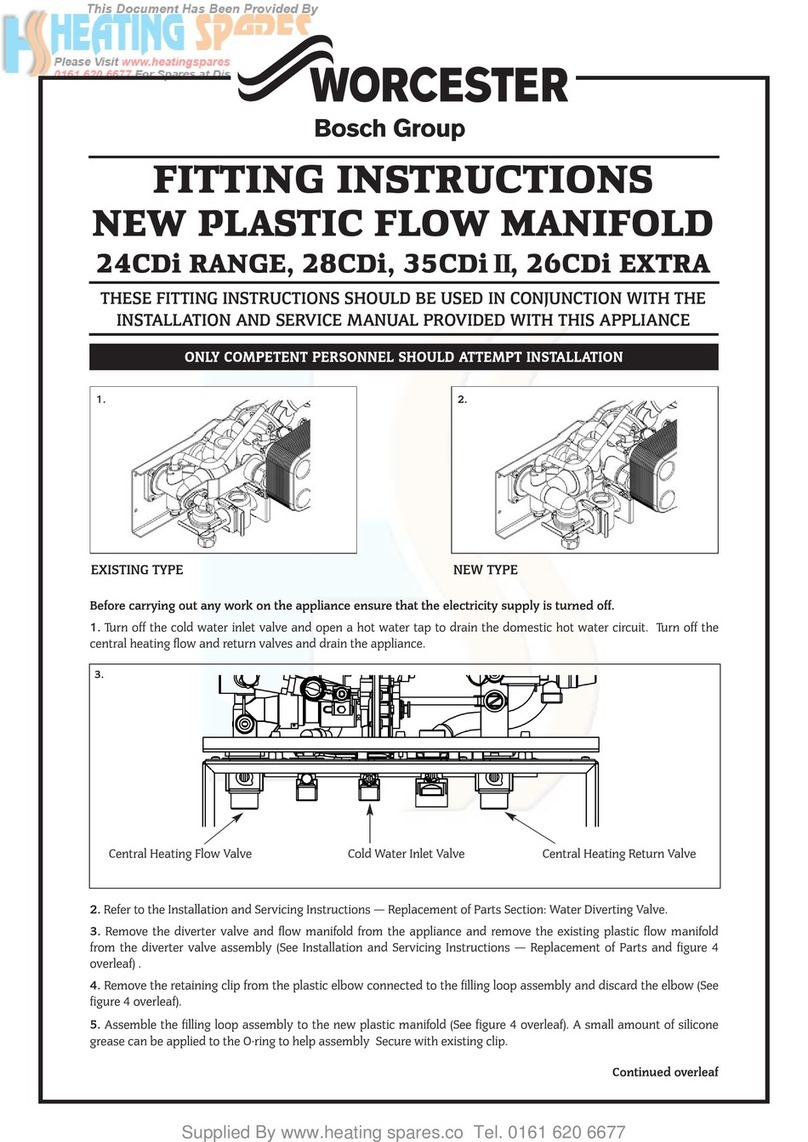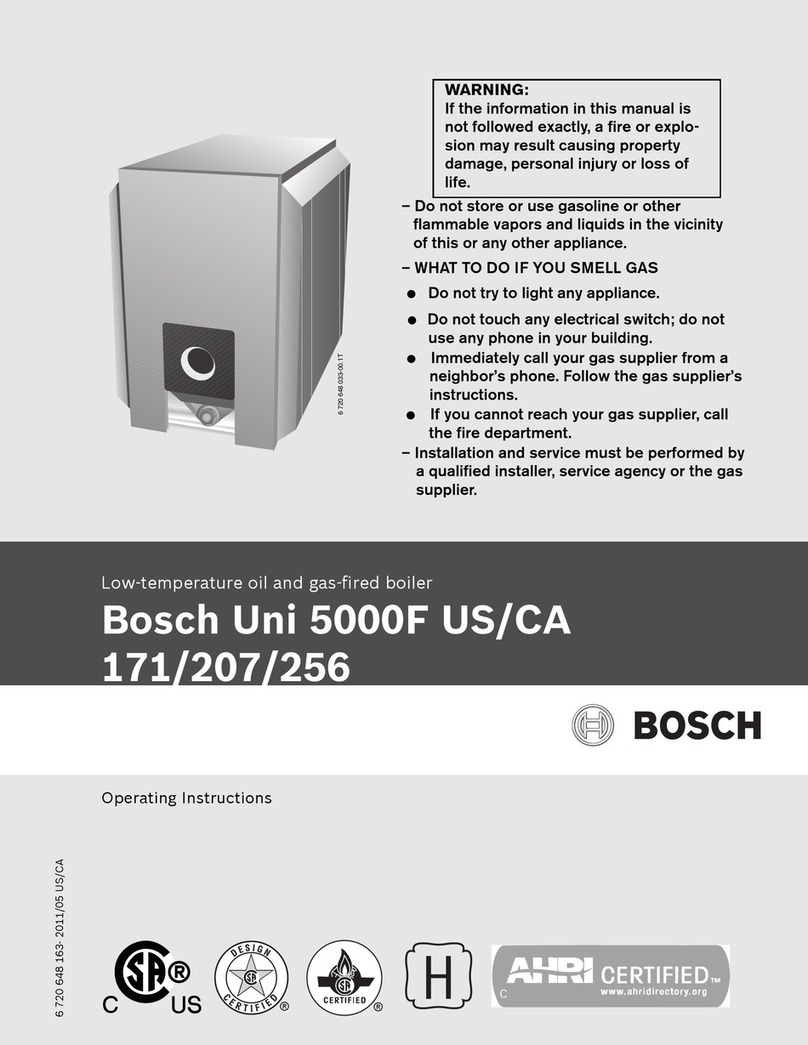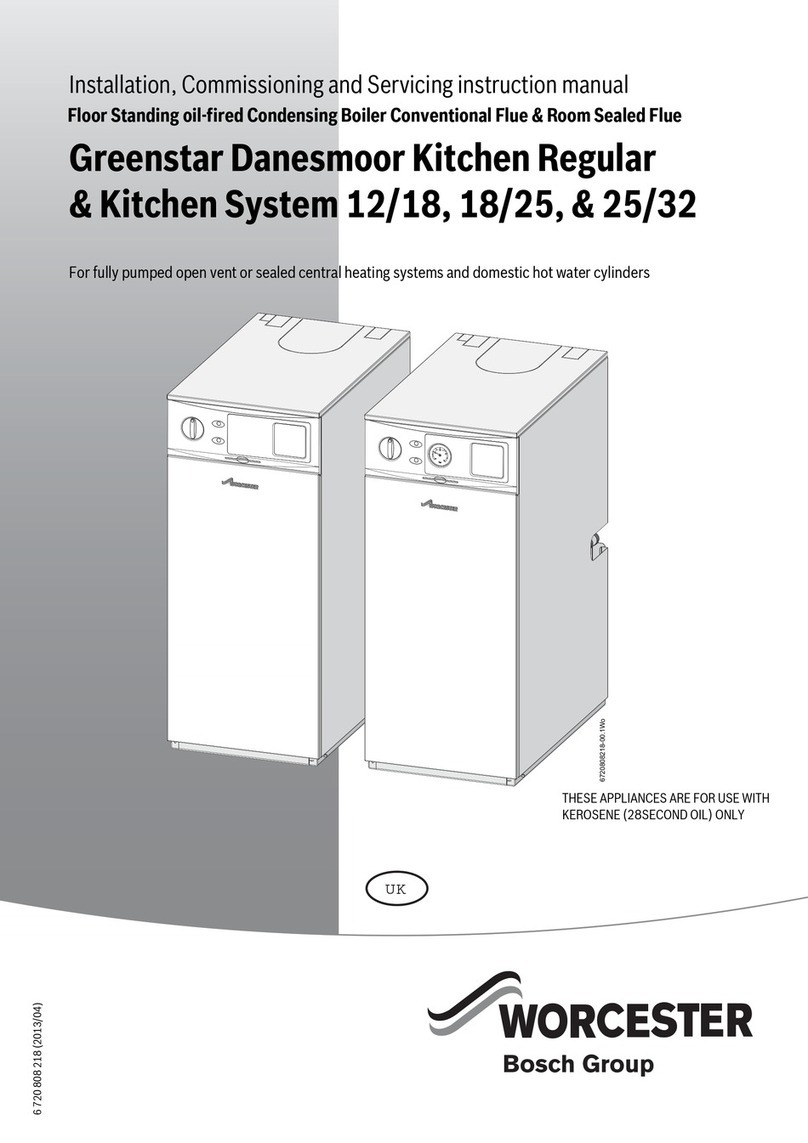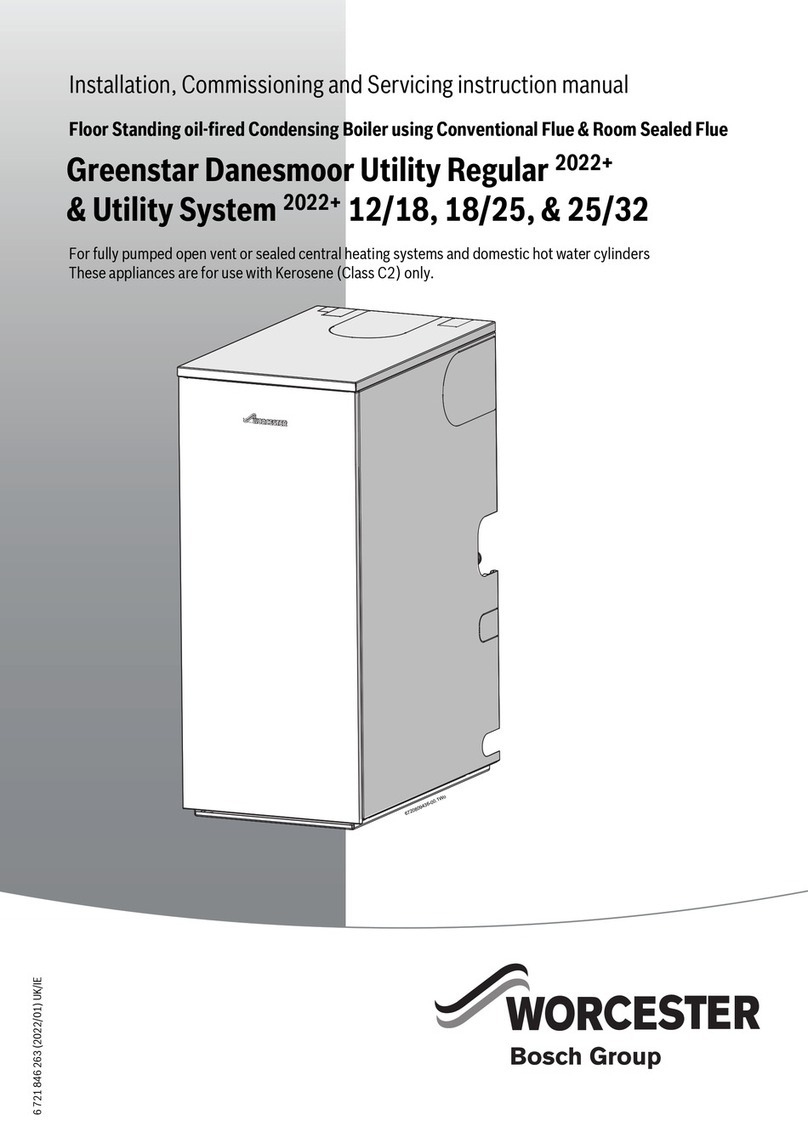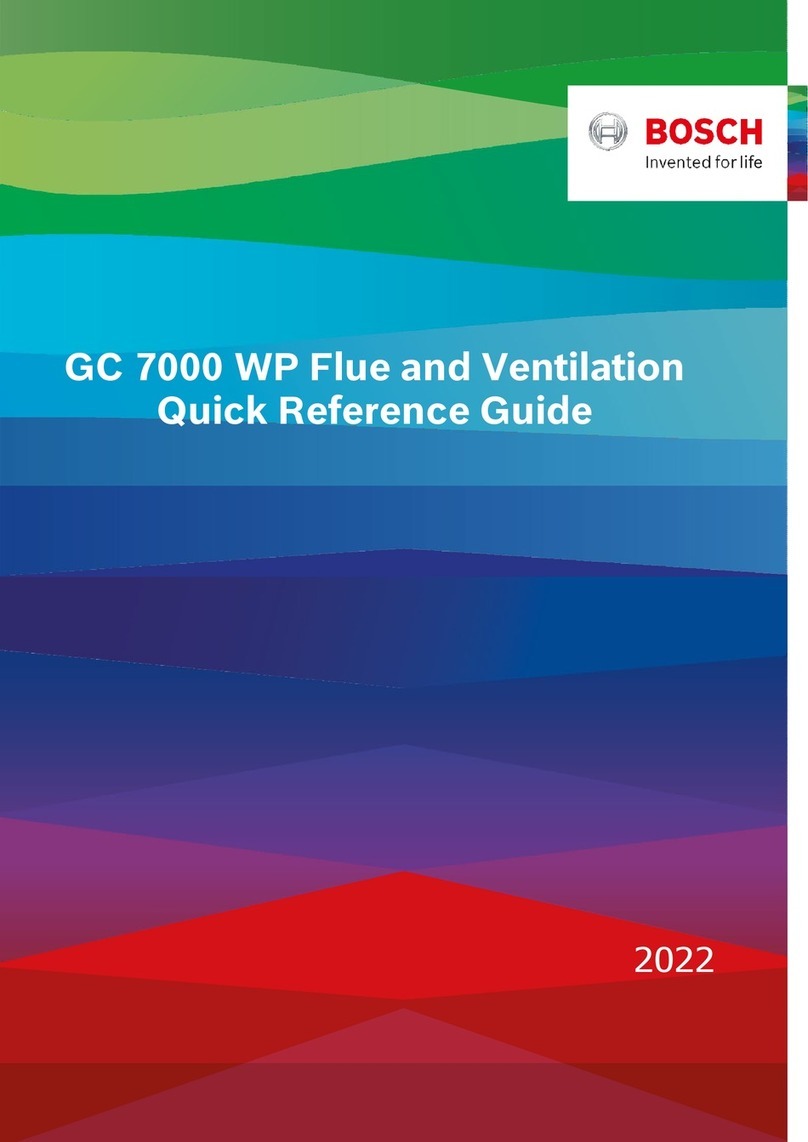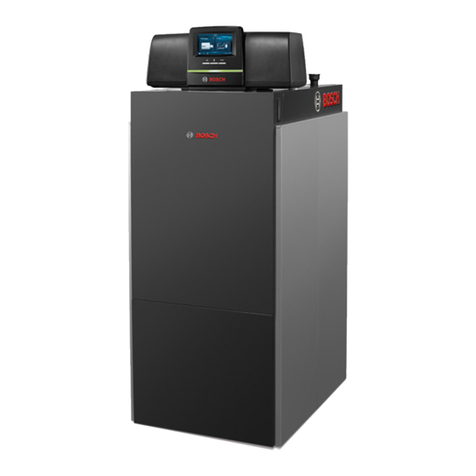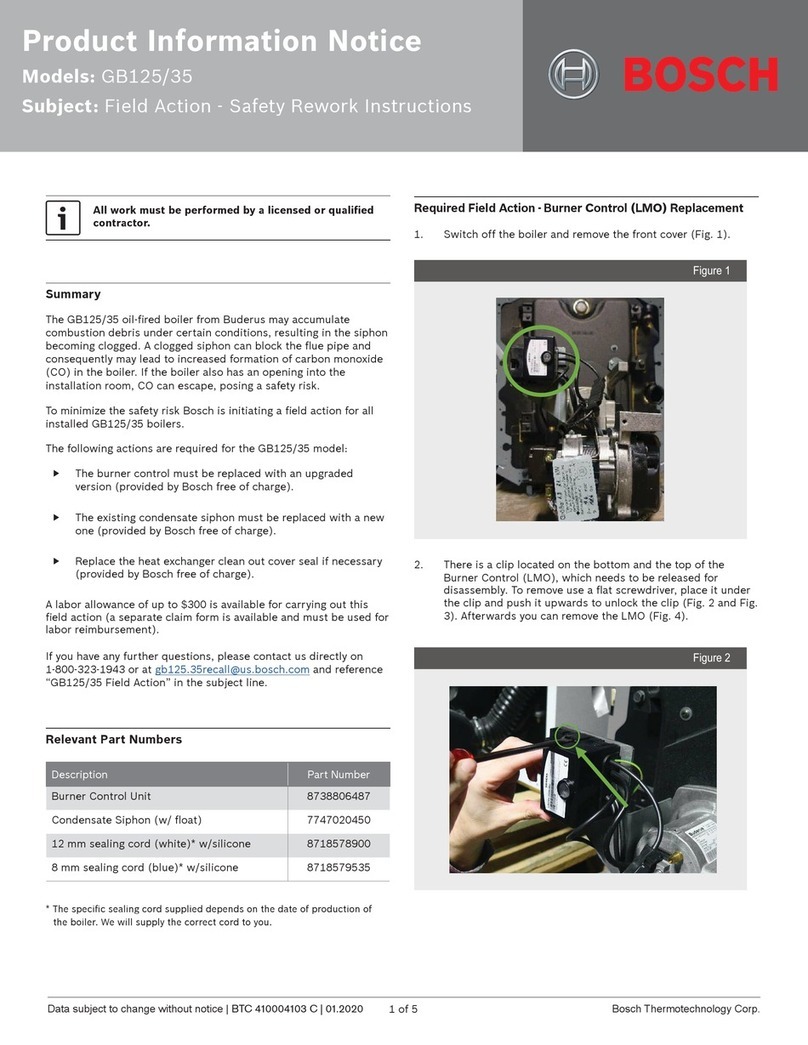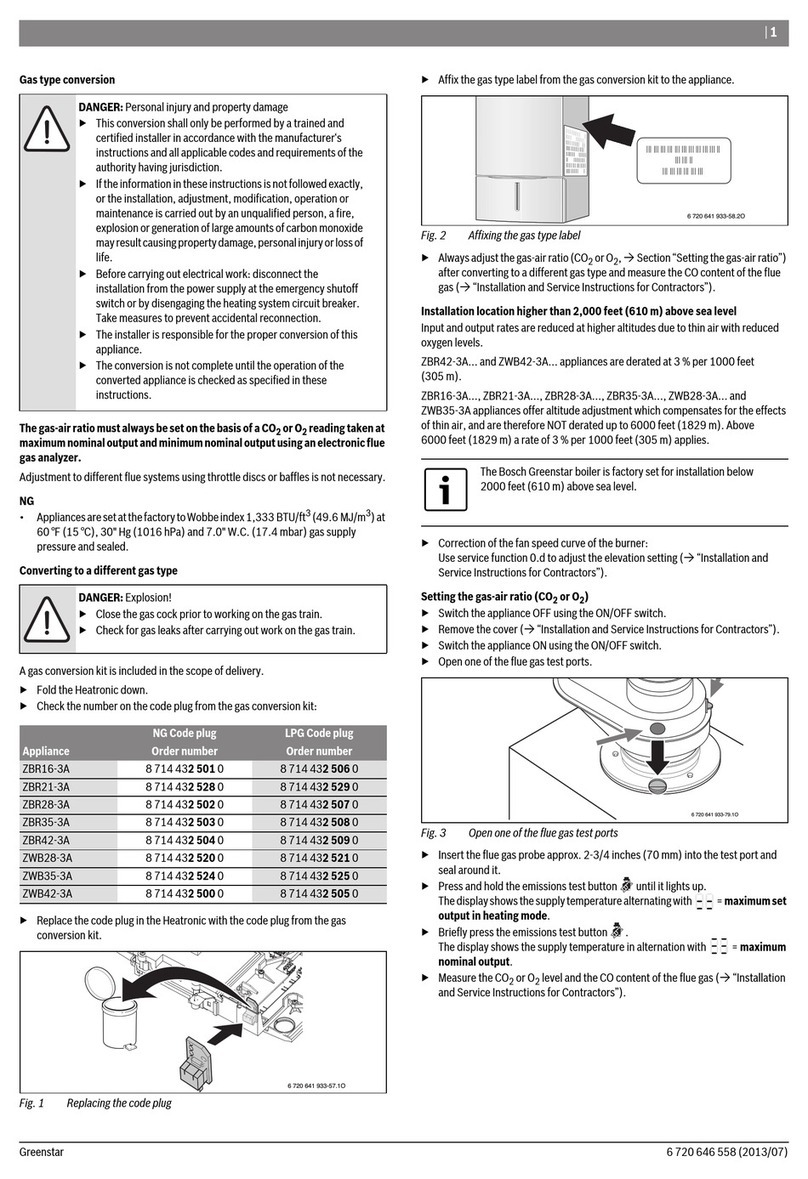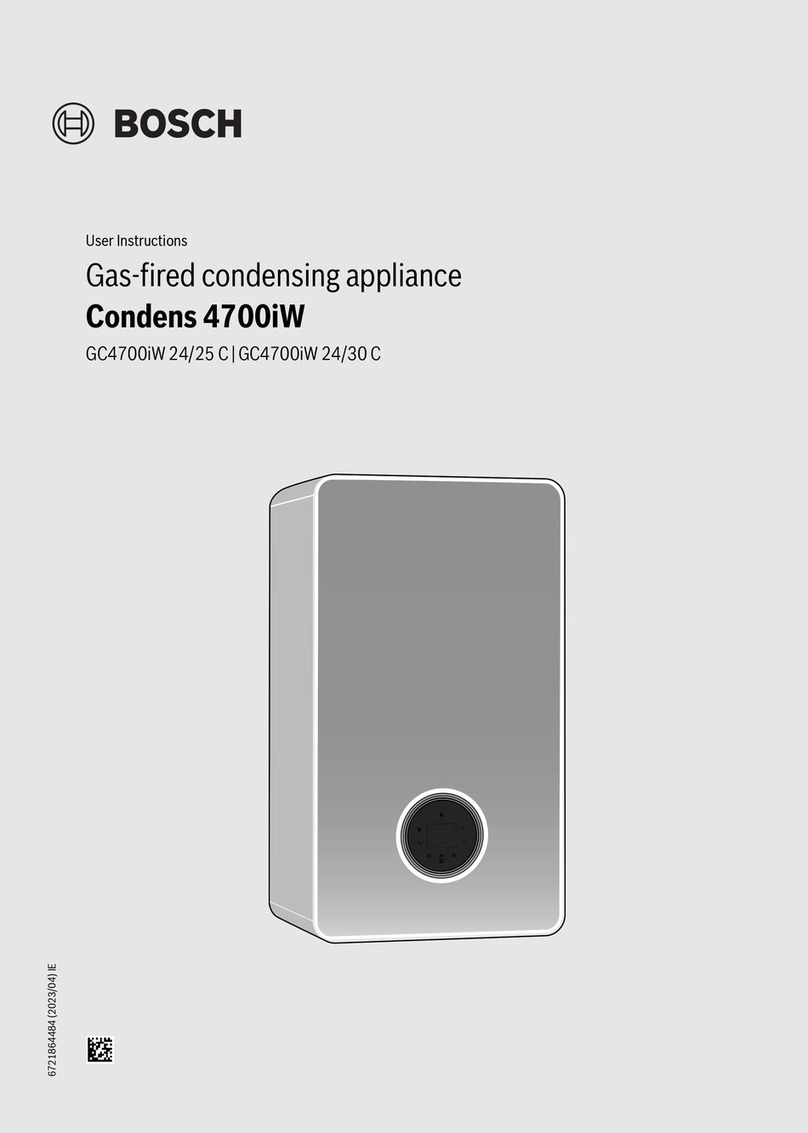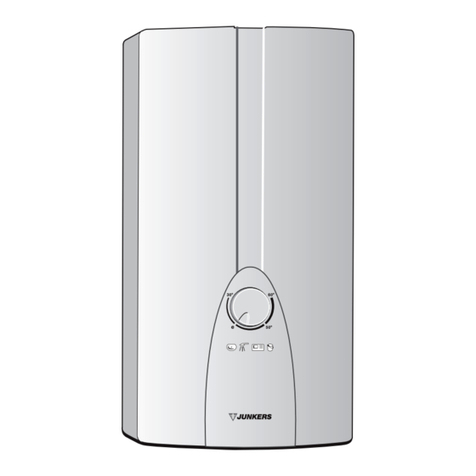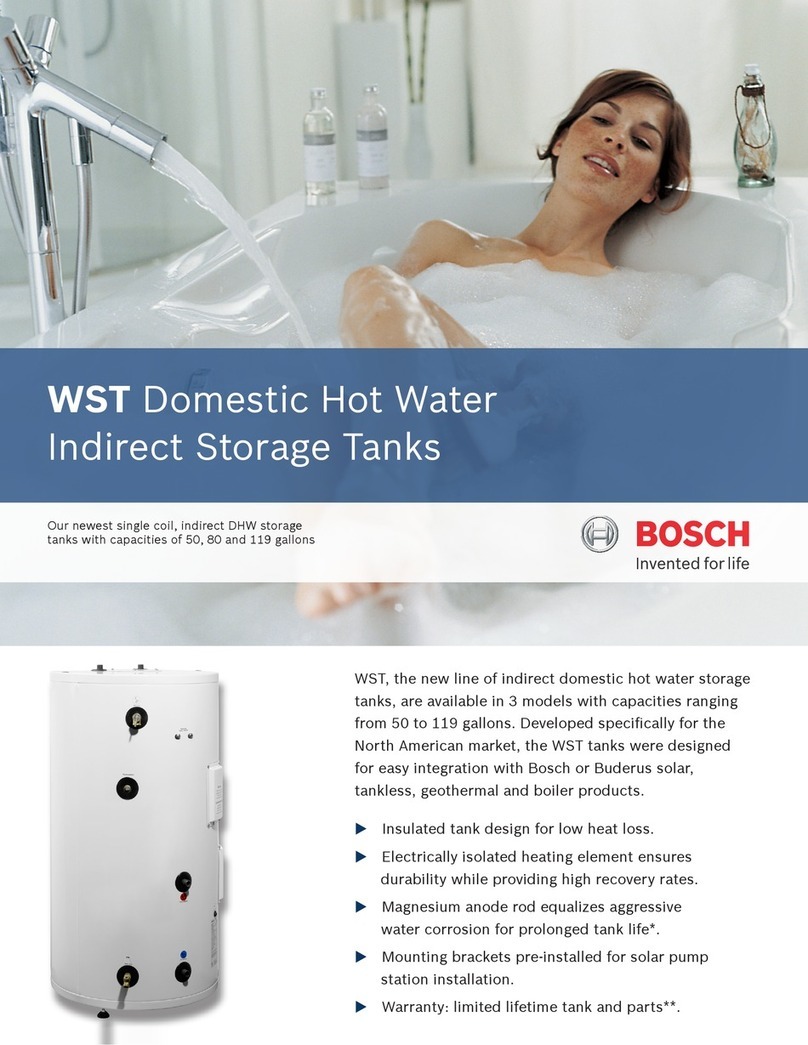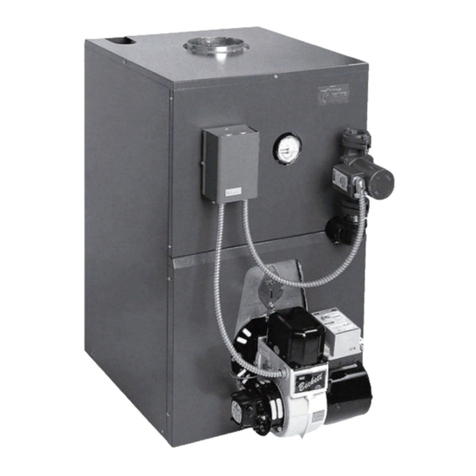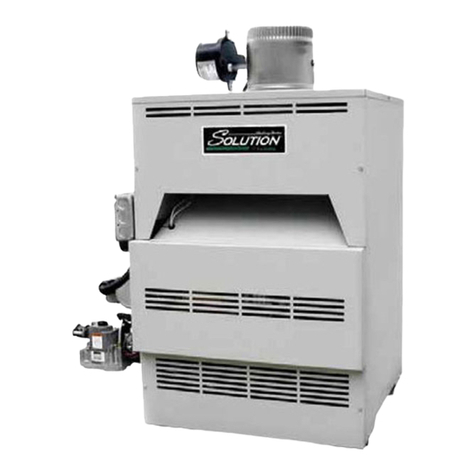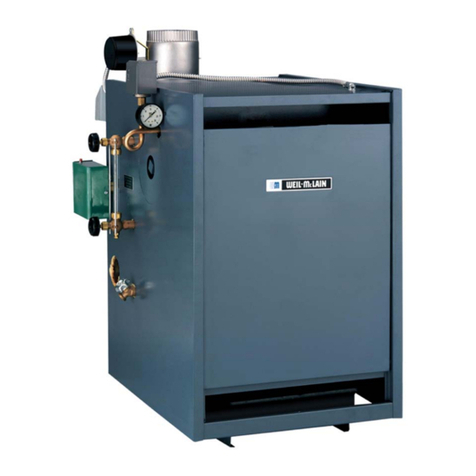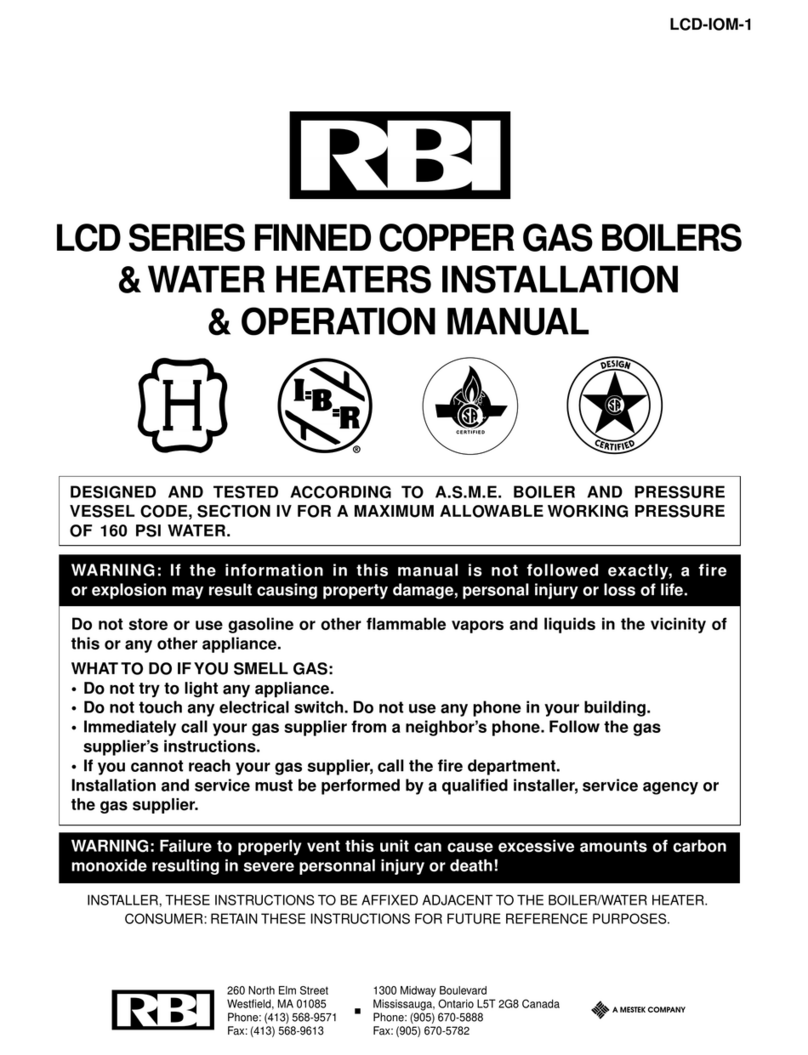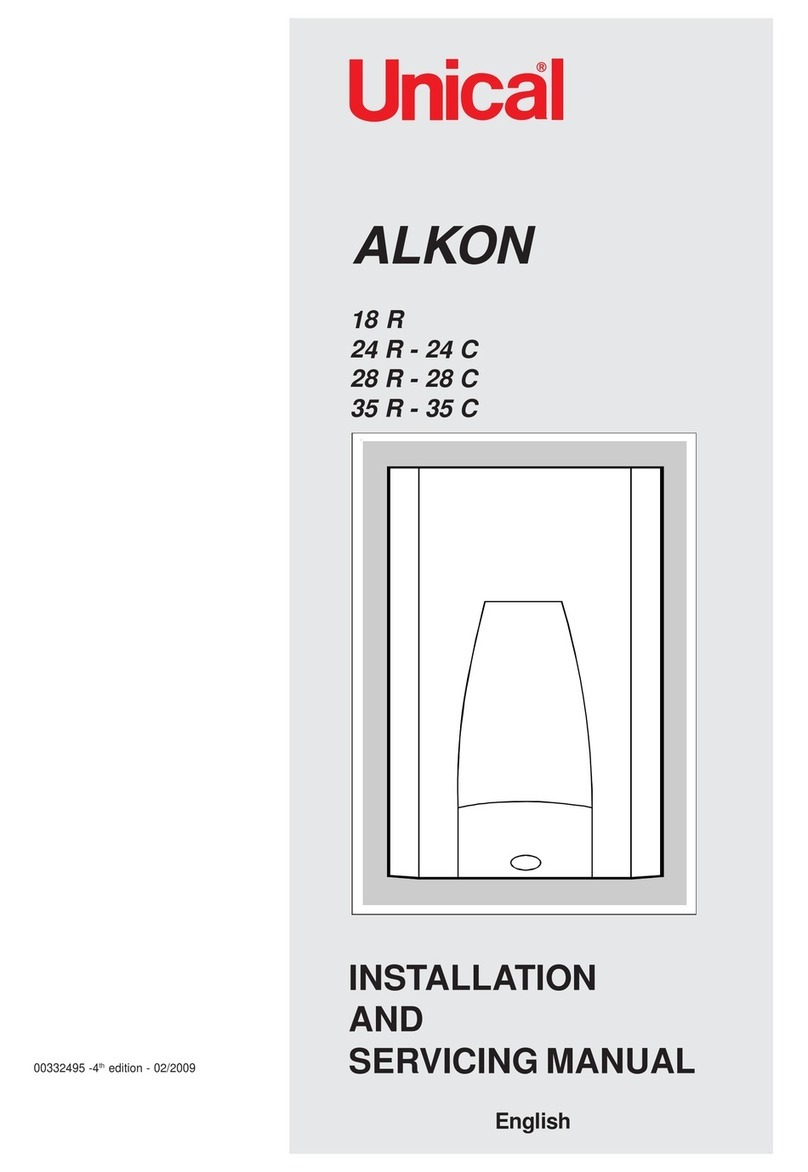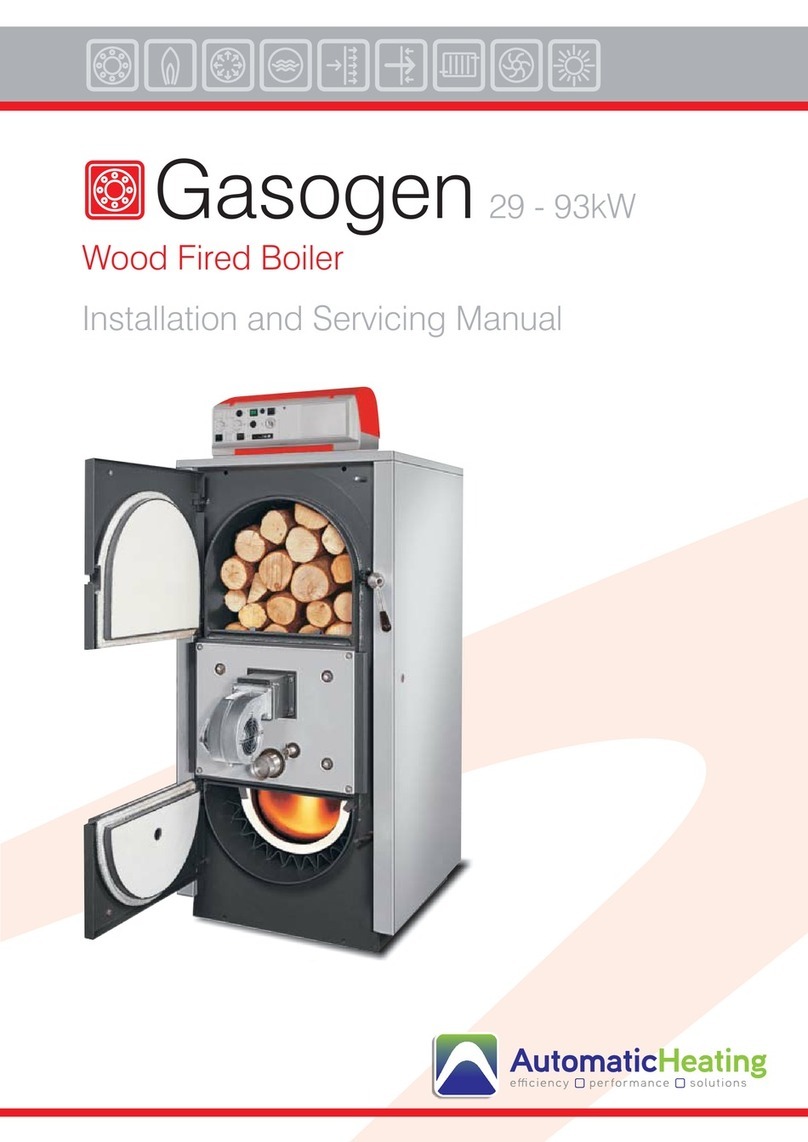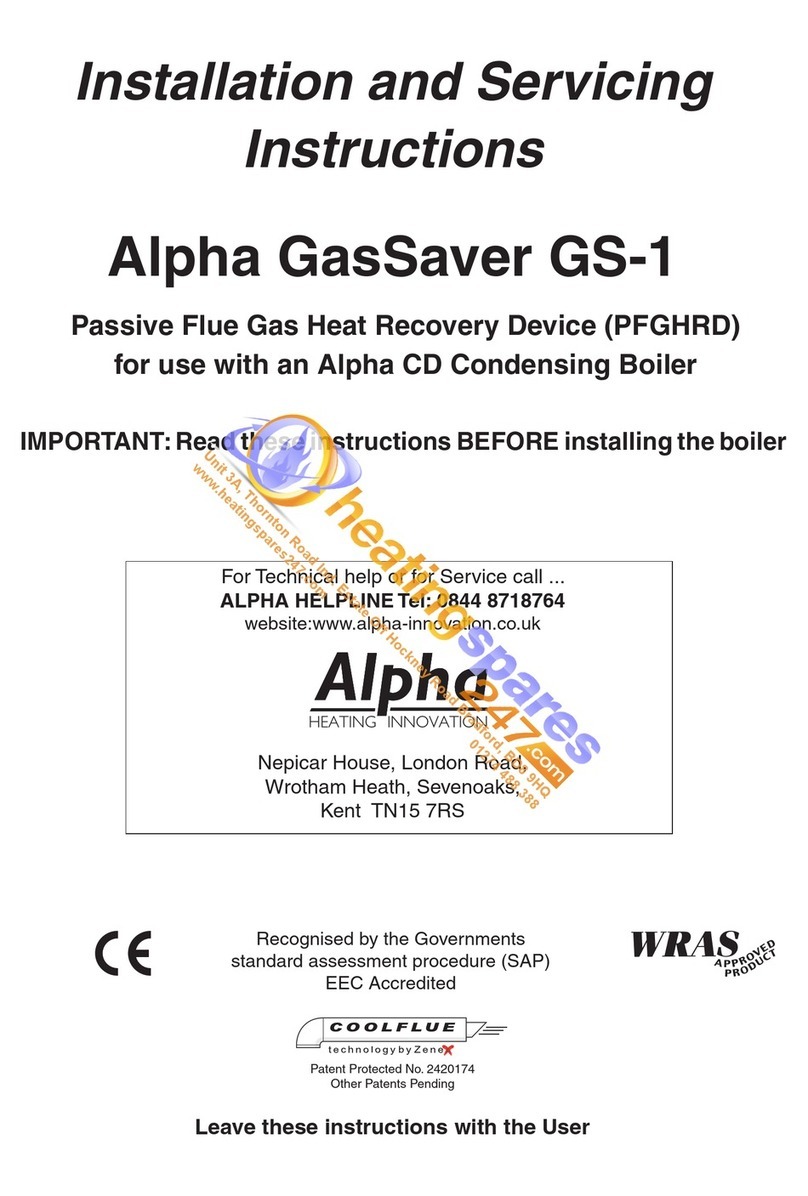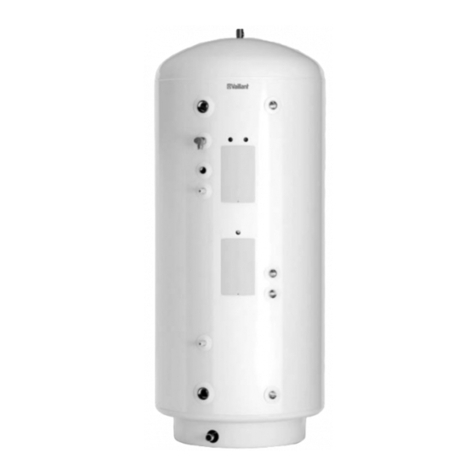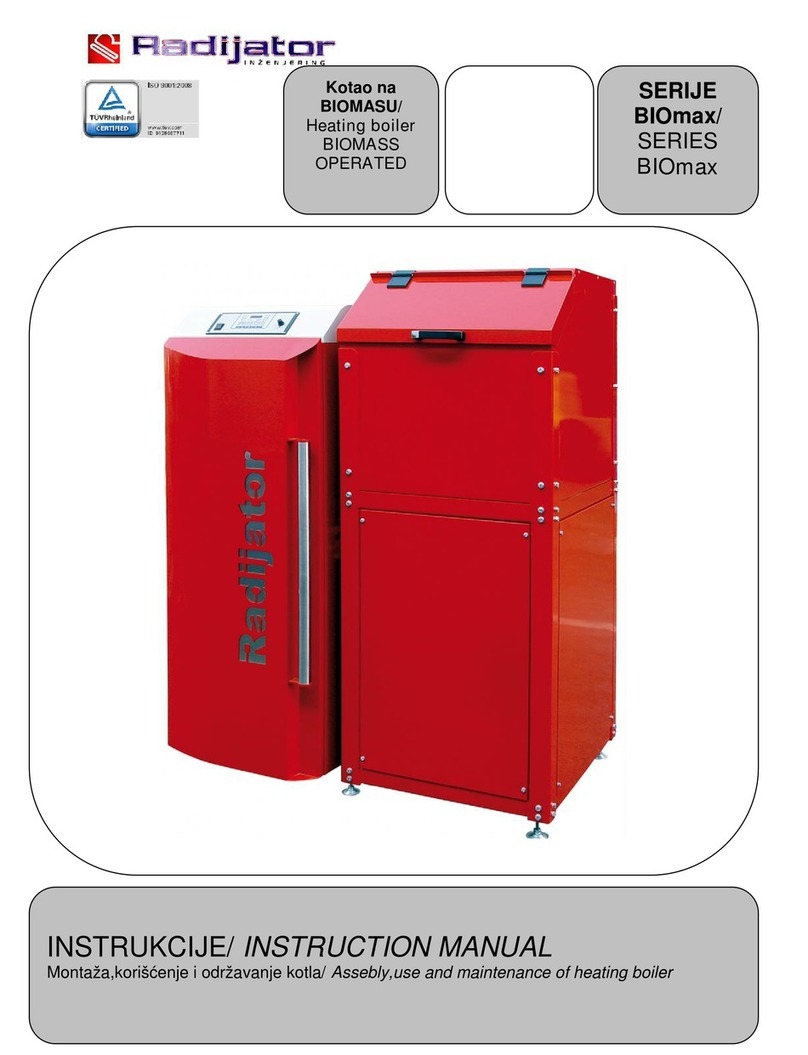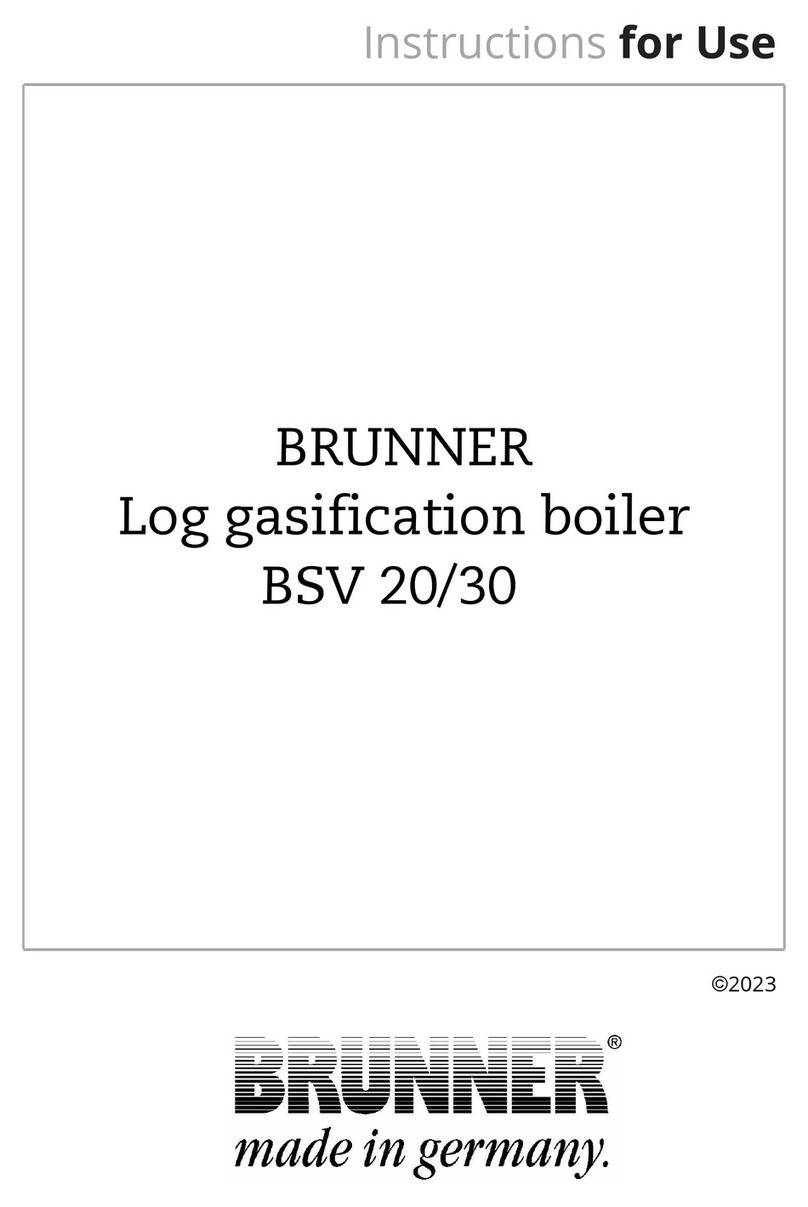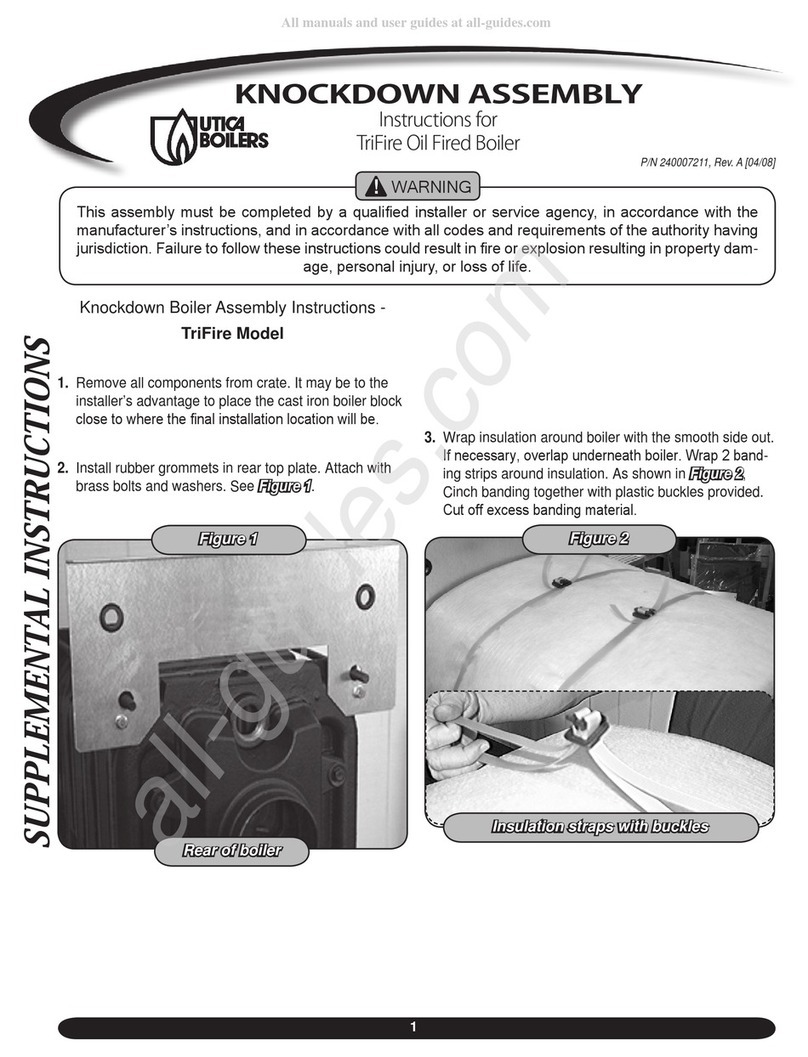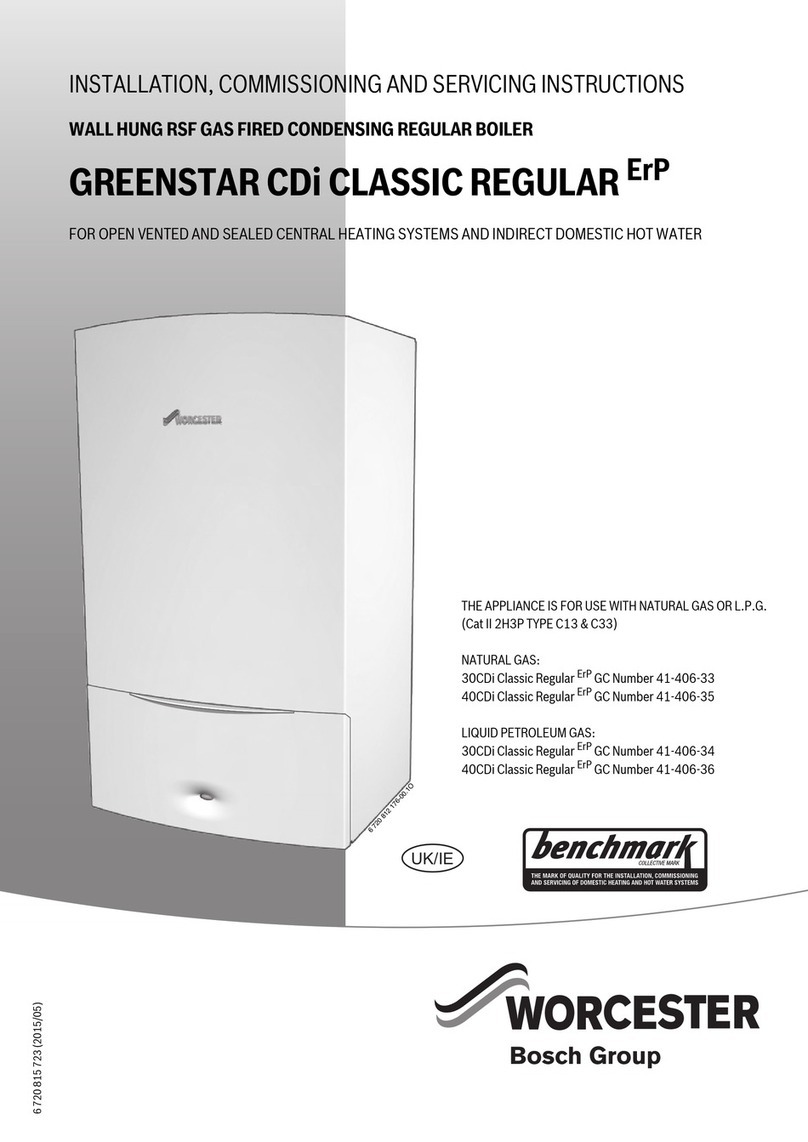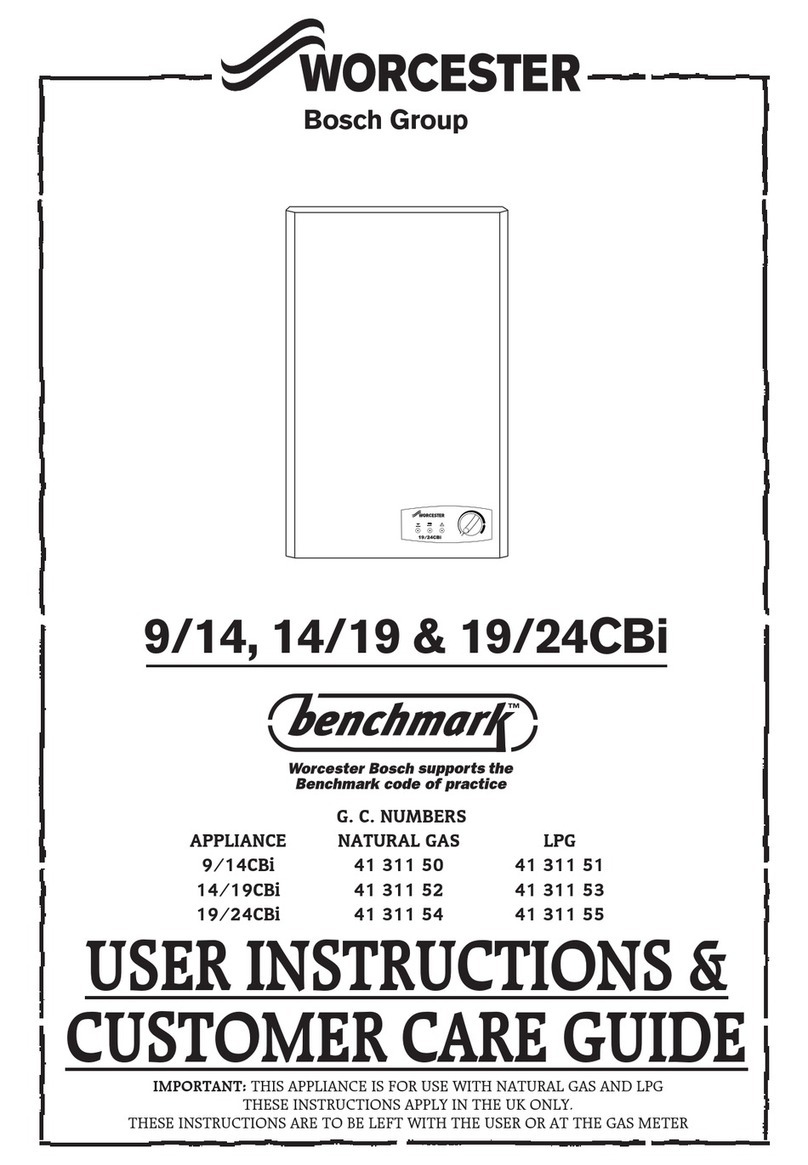
Key to symbols and safety instructions | 3
6 720 814 353 (2014/12)Uni 3000 F
1.2 Safety instructions
General safety instructions
Failure to observe the safety instructions can result in serious personal
and possibly life-threatening injuries as well as physical damage and
damage to the environment.
▶ Read the safety instructions carefully prior to commissioning the
system.
Danger through failure to consider your own safety in an emergency
such as a fire
▶ Never put yourself at risk of fatal injury. Your own safety is paramount.
Installation, conversion and operation
Insufficient ventilation can lead to dangerous flue gas leaks.
▶ Installation and commissioning as well as servicing and maintenance
must be carried out only by a suitably qualified contractor.
▶ Ensure that the plant room remains free from the risk of frost.
▶ The heating system must be installed and operated in accordance
with the applicable engineering practices as well as national, regional
and local regulations.
▶ Have the appliance installed only by a suitably qualified engineer.
▶Nevermodifyanypartsincontact with flue gas.
▶ Do not operate the device without sufficient water volume.
▶ Always keep equipment openings (doors, maintenance cover) closed
during operation.
▶ Only use approved fuels according to the rating plate.
▶ Ensure that the required ventilation cannot be blocked or hindered in
any way.
Risk through oil leaks
▶ If using oil as fuel, country-specific regulations hold the operator
responsible for asking a contractor to correct any oil leaks the
moment they are discovered.
If you smell fuel:
▶ Close the fuel isolation valve.
▶ Open windows.
▶ Never operate electrical switches.
▶ Extinguish all naked flames.
▶ Never smoke.
▶ Warn all occupants in the building, but do not ring doorbells.
▶ Leave the building and telephone your gas supply utility and
authorised contractor from an outside phone.
If you suspect the smell of flue gas:
▶ Switch off the appliance (page 6).
▶ Isolate the fuel supply and guard against unintentional re-connection.
▶ Open windows and doors.
▶ Notify an authorised contractor.
Electric shock hazard
▶ Before carrying out any work on the heating system, disconnect the
heating system from the power supply across all poles. For example,
press the emergency stop switch outside the boiler room.
▶ It is not enough to switch off at the control unit.
▶ Secure the heating system against unintentional reconnection.
▶ Adhere to country-specific rules and regulations when making the
electrical connection, commissioning, servicing and carrying out
maintenance.
Installation and conversion
▶ Only have the appliance installed or modified by an authorised and
suitably qualified contractor.
▶ Never modify any parts in contact with flue gas.
▶Withopen flue appliances: Never cover or reduce the size of air vents
in doors, windows or walls. If draught-proof windows are fitted,
ensure there is an adequate combustion air supply.
▶ Ensure that the plant room remains free from the risk of frost.
▶ The heating system must be installed and operated in accordance
with the applicable engineering practices as well as national, regional
and local regulations.
Inspection and maintenance
▶Recommendation for customers: Arrange a maintenance and
inspection contract with an authorised contractor, covering an annual
inspection and demand-dependent maintenance.
▶ The user is responsiblefor the general and environmental safety of the
heating system (in compliance with national regulations).
▶ Only use genuine spare parts! Spare parts are available via spare parts
merchants and a list of genuine parts can be found online (see last
page for details).
Explosive and highly flammable material
▶ Never use or store highly flammable materials (paper, thinners,
paints etc.) near the boiler.
Combustion/room air
▶ Keep the combustion/ambient air free of corrosive substances
(e.g. halogenated hydrocarbons that contain chlorine or fluorine
compounds). This will help to prevent corrosion.
▶ Keep combustion air free of dust.
▶ Never hang up washing to dry in the plant room.
Thermal disinfection
▶Risk of scalding!
Monitor any operation with temperatures in excess of 60 °C.
Disposal
▶ Dispose of packaging in an environmentally responsible manner.
